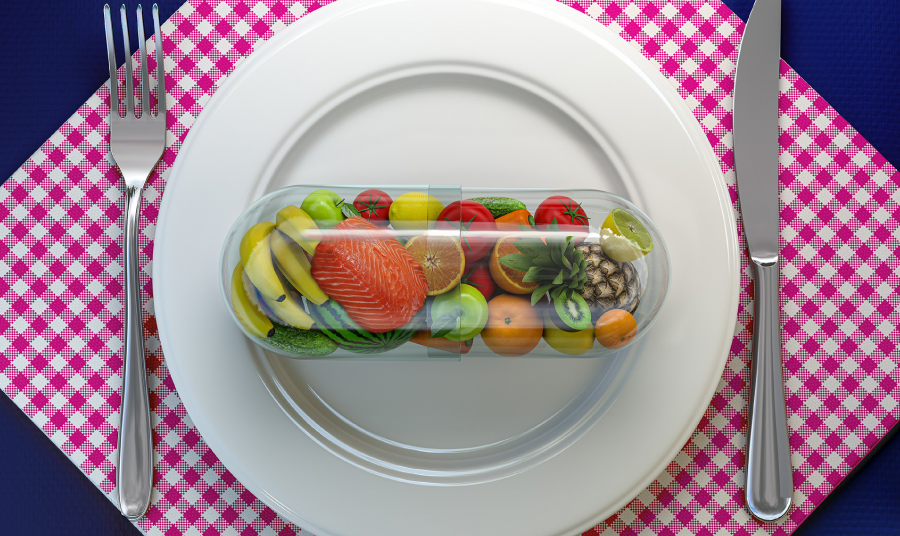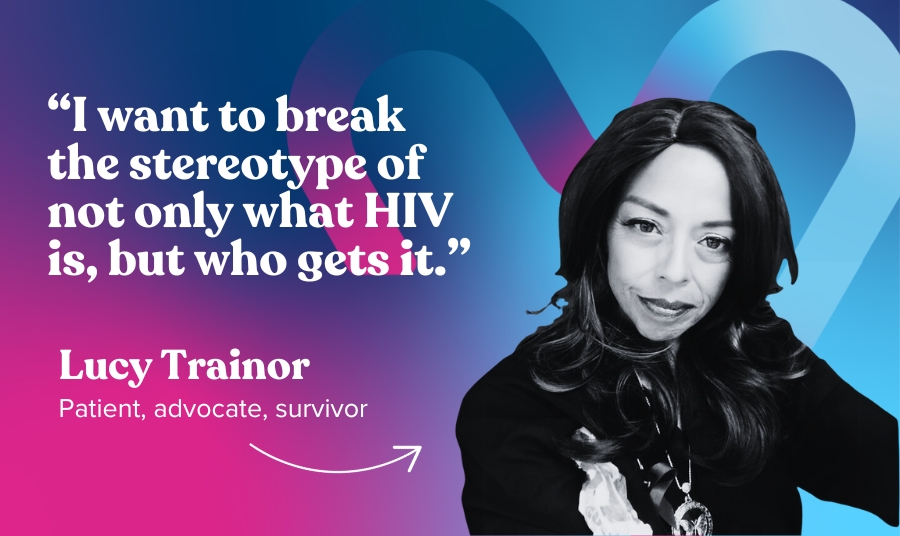In the forty-plus years since the HIV epidemic began, advances in treatment methods have undergone a veritable metamorphosis. Today, there are over 40 FDA-approved drugs to treat HIV (not to mention game-changing innovations in the prevention arena), and receiving a positive HIV diagnosis is no longer a death sentence. Patients living with HIV who have access to comprehensive medical care and consistently take long-term antiretroviral therapy (ART) can live lifespans similar to those without an HIV diagnosis, a stat backed up by the fact that over 50% of all people currently living with HIV are 50 years or older.
Now, fueled by a modern integrated approach toward HIV treatment as well as studies that prove food support programs decrease hospitalizations and boost wellness for people living with HIV, the “Food as Medicine for HIV” movement is receiving significant attention. A “reaffirmation that food and nutrition play a role in sustaining health, preventing disease, and as a therapy for those with conditions or in situations responsive to changes in their diet,” the Food as Medicine philosophy is rooted in the science that “the way we eat has a significant impact on disease management, just like medication,” says Alene Albritton, MPH, RD, LD, CDCES, director of nutrition services at AvitaCare Atlanta, an Avita Care Solutions company. “The same care and consideration allotted to determining the best HIV medications to use should be given to which foods people living with HIV eat.”
Read on as Alene chats with Avita Care Solutions’ Kelley Wyant about the link between diet and successful HIV treatment, foods on the “naughty and nice” list, the disconnect between how some patients think about food versus medicine, and how covered entities can help their patients begin to think of food as medicine even if the organization doesn’t have a dietitian on staff.
BONUS CONTENT: Alene offers her picks for top apps and resources that simplify menu planning, food intake tracking, meal prep, and achieving wellness goals.
The way we eat has a significant impact on disease management, just like medication. The same care and consideration allotted to determining the best HIV medications to use should be given to which foods people living with HIV eat.
Alene Albritton, MPH, RD, LD, CDCES
Director of Nutrition Services, AvitaCare Atlanta
KELLEY: Thanks so much for joining us, Alene! To kick things off, let’s talk about the link between food and sustained health for people living with HIV (PLWH). Formal studies have shown that food support programs help decrease hospitalizations and increase wellness for people living with HIV. In your own experience as a dietitian who has provided care for this community for more than two decades, how is food connected to successful HIV treatment?
ALENE: Proper nutrition is vital to the health and well-being of PLWH. Additionally, food has a significant impact on helping HIV medication work properly. For example, some medications must be taken with food to ensure proper absorption. Taking medication with food may also help minimize side effects, which in turn helps ensure that patients take their medication daily. If someone has difficulty accessing enough food, this can become a daily struggle for taking medication, which we know is critical to managing HIV.
Proper nutrition is vital to the health and well-being of people living with HIV. Additionally, food has a significant impact on helping HIV medication work properly.
Alene Albritton, MPH, RD, LD, CDCES
Director of Nutrition Services, AvitaCare Atlanta
KELLEY: What foods are optimal for PLWH, and which foods should they try to avoid or use in moderation? Is there a kind of “naughty and nice” list?
ALENE: The foods recommended for PLWH include a variety of whole grains, vegetables, fruit, dairy or fortified plant-based alternatives, and lean protein. Because PLWH have additional concerns related to immune function, protein is a vital part of their diet, ideally foods low in saturated fat like skinless chicken and turkey, fish, seafood, and beef and pork labeled lean or extra-lean. Plant protein sources include beans, peas, lentils, nuts, seeds, tofu, seitan, and tempeh. Consuming an adequate intake of various foods from the other food groups helps PLWH meet all their nutrient needs. Maintaining proper vitamin and mineral levels is also essential to immune function, which is why eating foods from all food groups is crucial.
Certain foods should be avoided primarily for food safety reasons. For example, it’s recommended that PLWH avoid foods that are more likely to cause foodborne illness, such as raw eggs or foods that contain raw eggs, unpasteurized milk or dairy and juices, and raw or undercooked poultry, meat, or seafood like sushi or raw oysters.
Because people living with HIV have additional concerns related to immune function, protein is a vital part of their diet, ideally foods low in saturated fat like skinless chicken and turkey, fish, seafood, and beef and pork labeled lean or extra-lean.
Alene Albritton, MPH, RD, LD, CDCES
Director of Nutrition Services, AvitaCare Atlanta
KELLEY: Why don’t some people associate food, or their dietary program, as being just as important as the medicine they’re taking to treat HIV?
ALENE: Most people haven’t been taught to think of food as a treatment for anything other than hunger. Usually, how and what people choose to eat is based on how they were raised or what they’ve done for many years.
It also can be difficult to make changes to your diet because it requires putting more thought into a daily transaction you might not have considered much before. However, as challenging as it can be initially, I’ve never had anyone tell me they didn’t feel better when they improved their diet. In addition to treating a health issue, people usually report other beneficial effects of eating well, like having more energy and thinking more clearly.
Most people haven’t been taught to think of food as a treatment for anything other than hunger. Usually, how and what people choose to eat is based on how they were raised or what they've done for many years.
Alene Albritton, MPH, RD, LD, CDCES
Director of Nutrition Services, AvitaCare Atlanta
KELLEY: Over 50% of all people currently living with HIV are aged 50 or older. Do dietary considerations become more important to this population as they age and potentially deal with other health issues related to aging? If so, why?
ALENE: Dietary considerations do become more important as people living with HIV reach 50 years or older. The risk of developing other health issues, like diabetes or cardiovascular disease, increases with age. Aging can also impact the immune system and make recovery more difficult. Proper nutrition can help prevent, postpone, or manage these health issues.
As challenging as it can be initially, I've never had anyone tell me they didn’t feel better when they improved their diet.
Alene Albritton, MPH, RD, LD, CDCES
Director of Nutrition Services, AvitaCare Atlanta
KELLEY: Walk me through how you work with PLWH to leverage healthy diets as part of their treatment plan.
ALENE: How I collaborate with patients depends on their needs, strengths, and preferences. We do an assessment first, when I learn about their likes, dislikes, what kitchen equipment they have, typical way of eating, health goals, etc. Next, I educate them about nutrition specific to their health issues or concerns. Then, we work together to find the best way for them to proceed.
For example, tracking food intake can be helpful for some people because it helps them know how many calories they are taking in and what kinds of foods they are eating. For others, this task is tedious and can lead to them becoming overly focused on everything they eat. I warn patients that the first method they try may not work and ask them to be honest about the process so we can work together to fine-tune their plans.
I warn patients that the first method they try [to change their diets] may not work and ask them to be honest about the process so we can work together to fine-tune their plans.
Alene Albritton, MPH, RD, LD, CDCES
Director of Nutrition Services, AvitaCare Atlanta
KELLEY: Not all covered entities have a dietitian on staff. However, those organizations can still help their patients living with HIV by educating them about the importance of a healthy diet. Are there online resources you’d recommend for this purpose?
ALENE: Sure, resources covered entities without a dietitian can use to provide nutrition education to PLWH include:
- “Nutrition and People with HIV” (from HIV.gov)
- “HIV and Nutrition and Food Safety” (from [email protected])
- Food safety is critical to PLWH’s maintaining good health, so the resources available at FoodSafety.gov can also be helpful.
Many other beneficial nutrition-related resources are not specific to PLWH but still offer helpful tools. These include:
- The American Diabetes Association’s website: While geared toward people living with diabetes, the nutrition information applies to anyone. They also created the Diabetes Food Hub, which includes recipes, meal-planning resources, and a blog about eating healthily.
- The American Heart Association also provides useful information about eating healthy, including recipes, their Heart-Check mark certification of foods, and tips for cooking at home.
In addition to these websites, others that are great resources for recipes are:
- Eating Well
- “Delicious Heart Healthy Eating” from the National Heart, Lung, and Blood Institute’s website
- Oldways, which offers recipes and information about the Mediterranean Diet.
Many beneficial nutrition-related resources are not specific to people living with HIV but still offer helpful tools.
Alene Albritton, MPH, RD, LD, CDCES
Director of Nutrition Services, AvitaCare Atlanta
KELLEY: A little birdie told me you have a list of helpful dietary-related apps. Would you be willing to share it with our readers?
ALENE: Absolutely! Here you go:
(Many of the apps below have a free version or trial or include complimentary resources. Apps or platforms marked with * also include a paid component or premium version at the time of publication).
Top apps for meal prep and menu planning:
- Fit Men Cook*
- Foodsmart by Zipongo*
- Intent*
- MealBoard*
- Mealime*
- MyFridgeFood
- Paprika*
- Pepperplate*
- Plan to Eat*
Top apps for tracking food intake:
- My Food Data*
- Fooducate*
- Lose It!*
- MyNetDiary* – Calorie counter and diet assistant
Other helpful diet and wellness apps:
- Noom* – Through a combination of psychology, technology, and human coaching, the Noom platform has helped millions of our users meet their personal health and wellness goals.
- Habit Tracker* – Choose which habits you want to track to increase productivity and success.
- Waterllama* – Tracks water intake and reminds you to drink water.
- Yuka* – Scans product labels and analyzes the health impact of food products and cosmetics.
Top cooking resources:
- My Plate – Tips for eating healthy while watching your budget.
- Nutrition.gov – This website includes a wide variety of nutrition information for all ages.
- Cook Smarts* – A meal planning service with great information on learning to cook, saving time in the kitchen, and saving money on food.
- Food Subs – This is a cooking encyclopedia that covers thousands of ingredients and kitchen tools.
Third-party links to other websites/organizations on The Avita Blog are provided as a service to readers and do not constitute endorsements of said content or organizations. Avita is not responsible for the content of external websites.




